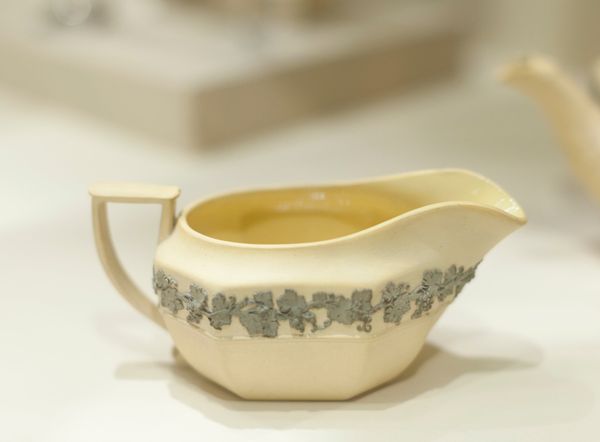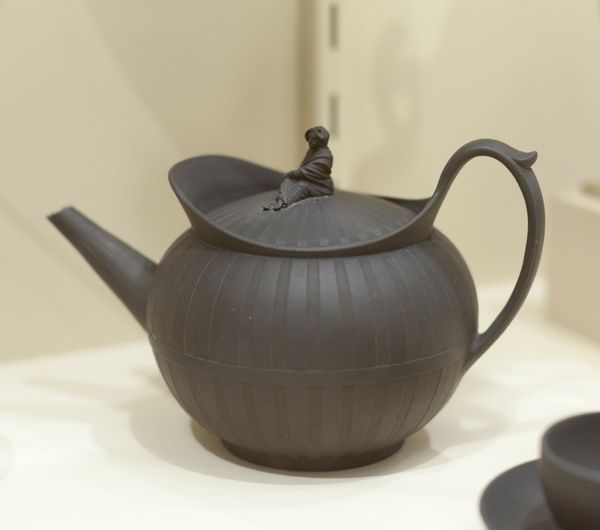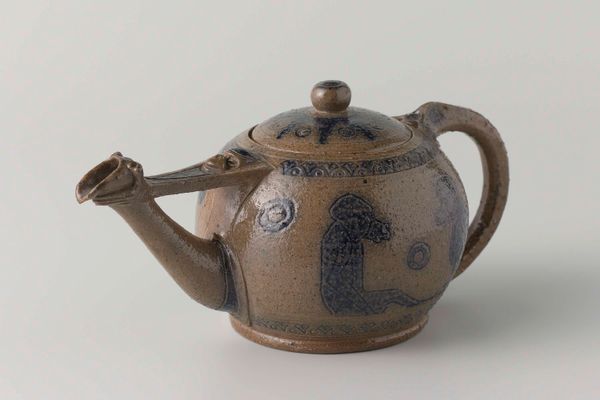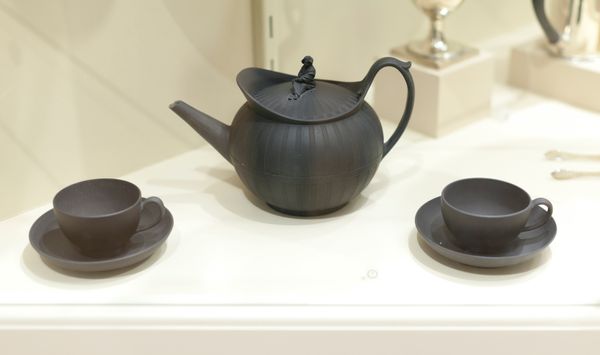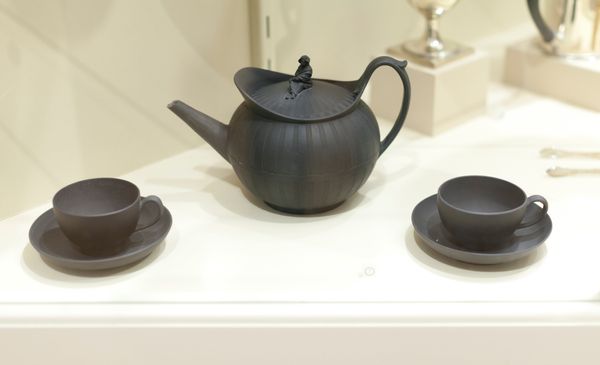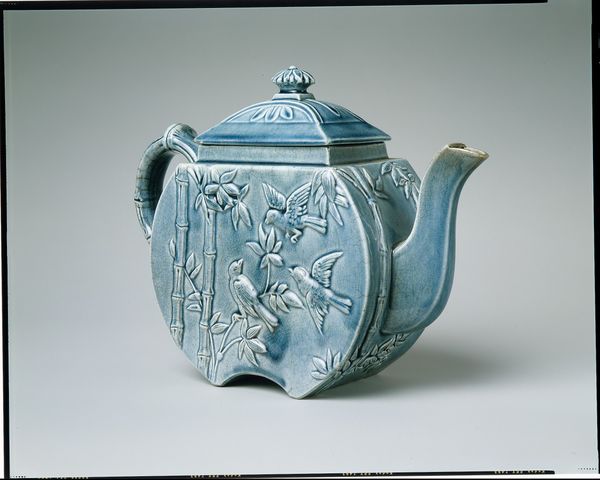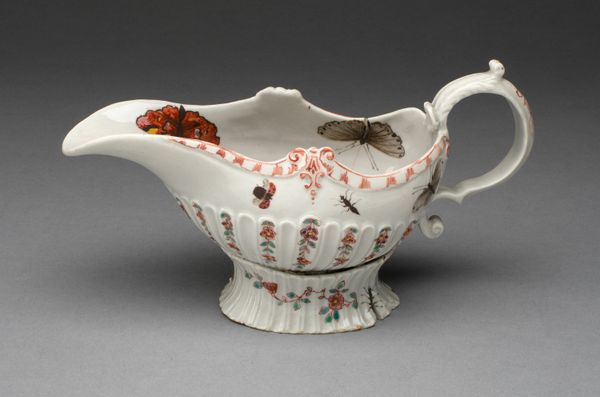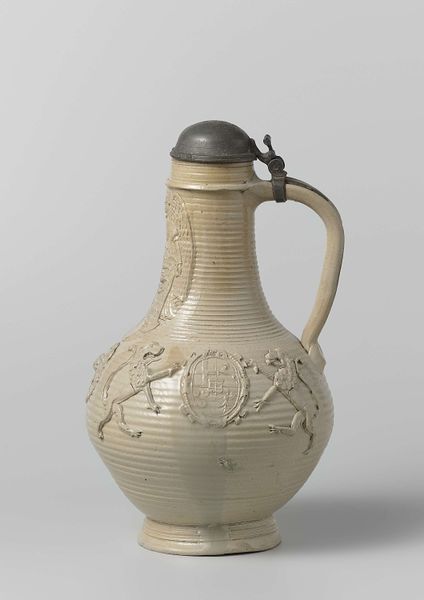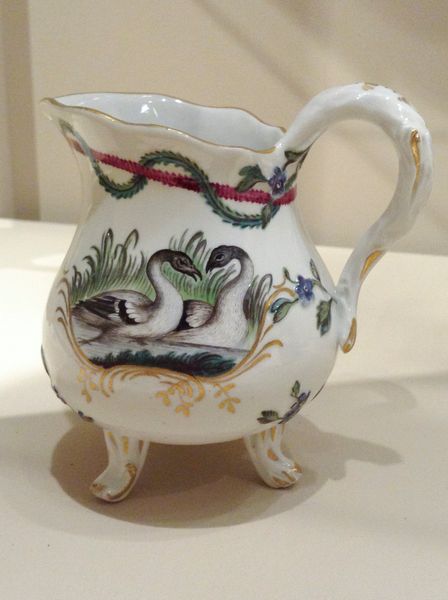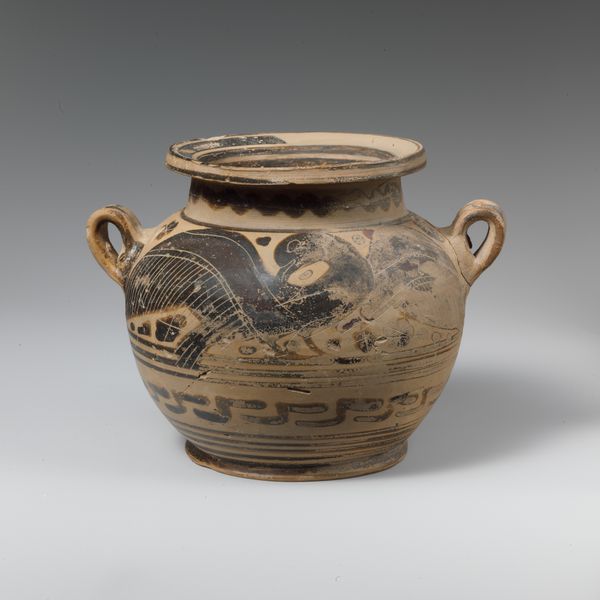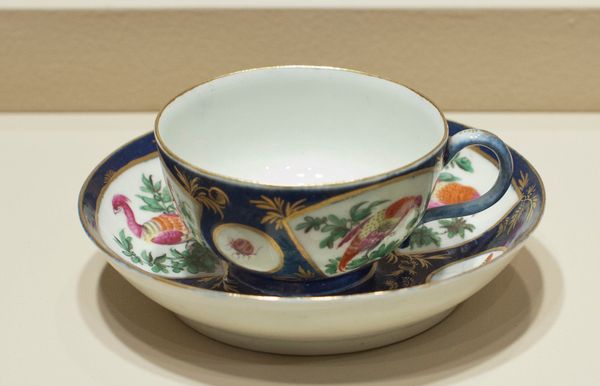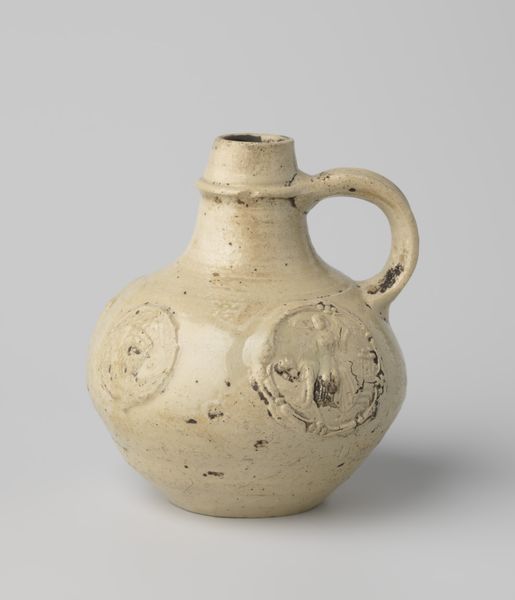
ceramic
#
neoclacissism
#
ceramic
#
ceramic
#
decorative-art
Dimensions: 4 1/8 x 8 3/8 x 5 3/8 in. (10.5 x 21.3 x 13.7 cm)
Copyright: Public Domain
This teapot was made by Wedgwood around 1759, crafted from Jasperware, a type of stoneware famous for its matte, unglazed finish. The body of the teapot has been molded, probably using plaster molds to achieve the crisp, neo-classical form, after which sprigging – the application of pre-formed clay ornaments – has been applied. This is a tradition that goes back centuries, but Wedgwood perfected it as a kind of proto-industrial process. He famously divided labor in his factory to improve efficiency. The soft color palette is no accident. Wedgwood took great pride in the chemical composition of his clay, which allowed precise color control. With this he tapped into an emerging market of aspirational consumers. The teapot embodies how design and manufacturing can meet the demands of a burgeoning market. Looking at this teapot, we begin to understand how innovation in materials and processes blurs the boundaries between art, craft, and industrial production.
Comments
No comments
Be the first to comment and join the conversation on the ultimate creative platform.
